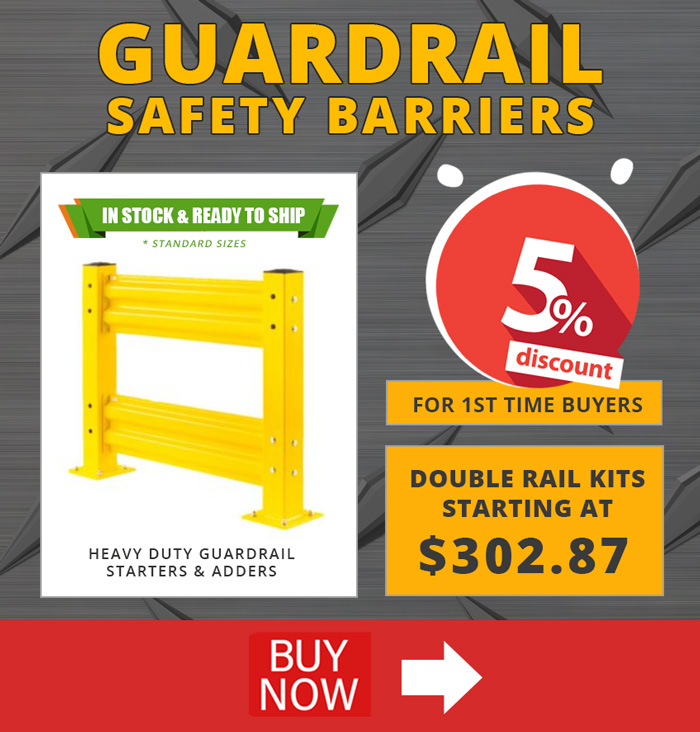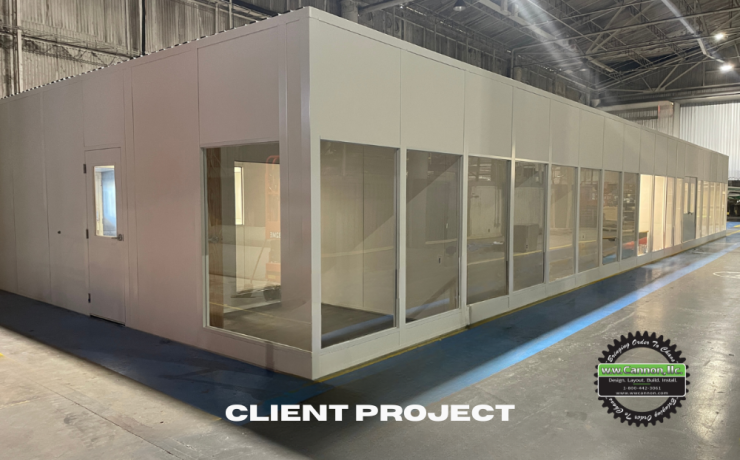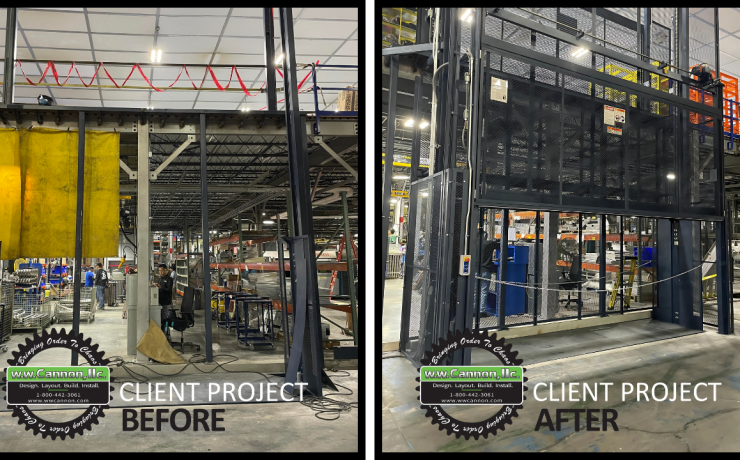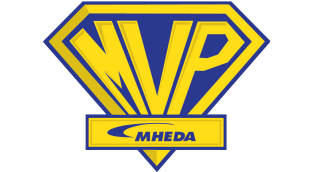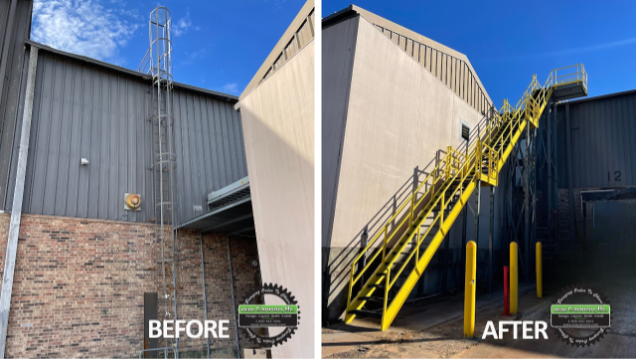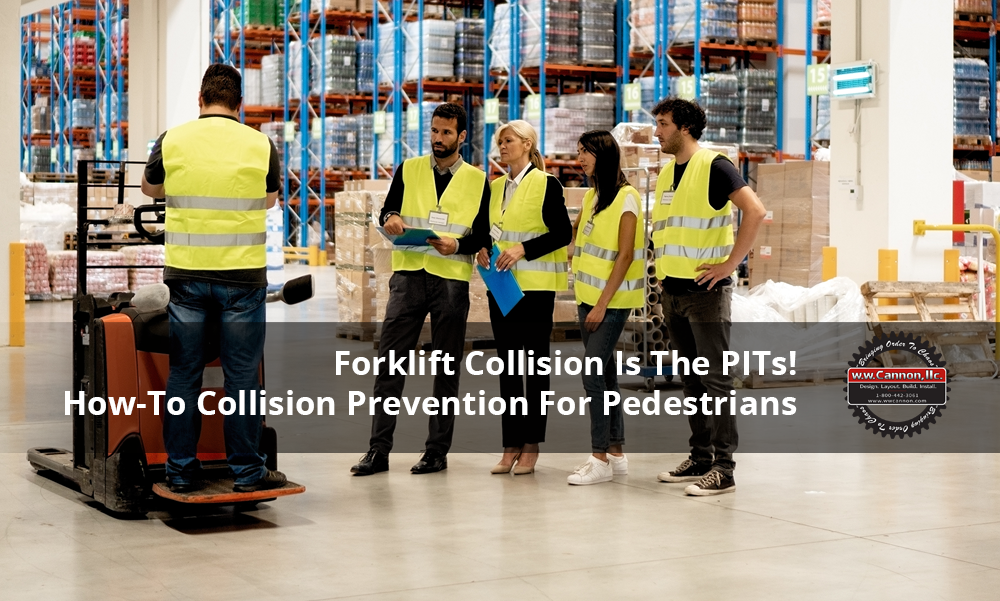
Forklift Collision Is The PITs! Pedestrian Safety Is Paramount
While they are extremely useful machines for many industries, forlklifts and other types of powered industrial trucks (PITs), present a variety of hazards that result in deaths and injuries every year. NIOSH’s (National Institute for Occupational Safety and Health) report (linked on OSHA) states that about one in four of all forklift accidents each year involve a pedestrian being struck by a PIT or falling loads.
Many of these incidents occur in the retail industry, which makes sense if you think about it. Most order picking processes require workers to travel throughout the warehouse. Oftentimes, the workers simply haven’t received the proper training or were taken by surprise by a negligent operator.
It really doesn’t matter if a forklift accident is the pedestrian’s or operator’s fault; the ultimate responsibility falls on the employer. Companies that use forklifts have a duty to protect their workers and other pedestrians from collisions but aren’t always taking enough precautions. Fortunately, most incidents can be prevented when employers and workers take the proper measures for forklift pedestrian safety.
Forklift Safety Training: The Facts
OSHA requires employers to develop and implement a training program based on the general principles of safe truck operation, the types of vehicle(s) being used in the workplace, the hazards of the workplace created by the use of the vehicle(s), and the general safety requirements of the OSHA standard. The training should be both formal (lectures, written materials, videos, etc.) and practical (demonstrations and exercises).
Most forklift distributors offer training along with documented plans regardless if the equipment is new or used. If you didn’t get your PIT from a distributor, you can contact the manufacturer who may direct you to an authorized trainer.
Forklift Safety: Who Needs To Be Trained?
When it comes to forklift safety, it’s important to train everyone involved:
Operators
Let’s start with the most obvious; anyone who drives a forklift is required by OSHA to receive adequate safety training and must demonstrate their ability to operate the vehicle safely.
Employers/Managers
Since they carry the responsibility of ensuring overall safety, employers and all warehouse managers should be trained on the hazards associated with forklifts and how to prevent them. It’s also their duty to evaluate operators at least once every three years and enforce refresher training as needed.
To further uphold safety standards in the warehouse, managers should also:
- Make it a company policy to renew forklift certifications on a regular basis.
- Have all forklifts routinely inspected and maintained.
- Safeguard the work area by actively looking for and resolving accident-prone conditions, such as poor lighting, high noise levels, insufficient aisle space, excessive speeds, and traffic control.
Employees
People who share space with forklifts in any capacity should be educated on the risks associated with the machinery. You may want to have a plan to provide brief, basic awareness training to non-operators like visitors, office staff, sales people, and anyone else who may venture into the warehouse.
In addition, all pedestrians should encounter obvious signals and warnings whenever they are sharing a space with forklifts such as signage, floor tape marking off forklift zones, and other safety solutions mentioned below.
Forklift Collision Prevention Equipment & Safety Barriers
For common forklift hazard zones, there’s a wide variety of safety equipment we can recommend and install in your facility to guard against collision damage including:
- Guardrail systems create a strong barrier around machinery, and storage equipment.
- Pedestrian barriers limit PIT traffic and provide safe walkways.
- Bollards protect gates, dock doors, and walls.
- Post protectors guard pallet rack systems from forklift impact, greatly reducing the risk of damage.
- Floor angle guides reduce minor impact damage low to the ground from critical rack supports.
- Safety gates close off areas to reduce forklift traffic flow.
- Safety lights and mirrors provide proper lighting and visual cues to prevent accidents in common traffic areas.
- Collision awareness sensors emit red and green lights to indicate “stop” and “go” at dock doors and blind intersections, providing clear signals to forklift drivers.
Next Step
Protecting your workers is your highest priority. Contact us for safety inspections, documented plans, and safety equipment to help identify hazards and prevent forklift collisions.
For consultation or to schedule a safety analysis of your facility, please give us a call today at 800-442-3061.
CONTACT US
Find the Right Solution
How can we help you solve your challenges? Reach out and someone will be in touch soon for more details.
Other Topics
Related Stories
Industry: Leading manufacturer of food, agriculture, industrial and animal nutrition products and services. Challenge: Provide an all-inclusive employee area customized…
WW Cannon recently completed a Vertical Reciprocating Conveyor (VRC) installation for a client in Oklahoma – providing a heavy-duty, user-friendly…
W.W. Cannon, LLC is proud to receive the reputable MHEDA MVP (Most Valuable Partner) Award again in 2024 for their…
Recently, we had the privilege of working with a client who faced a significant safety challenge: accessing HVAC units on…

